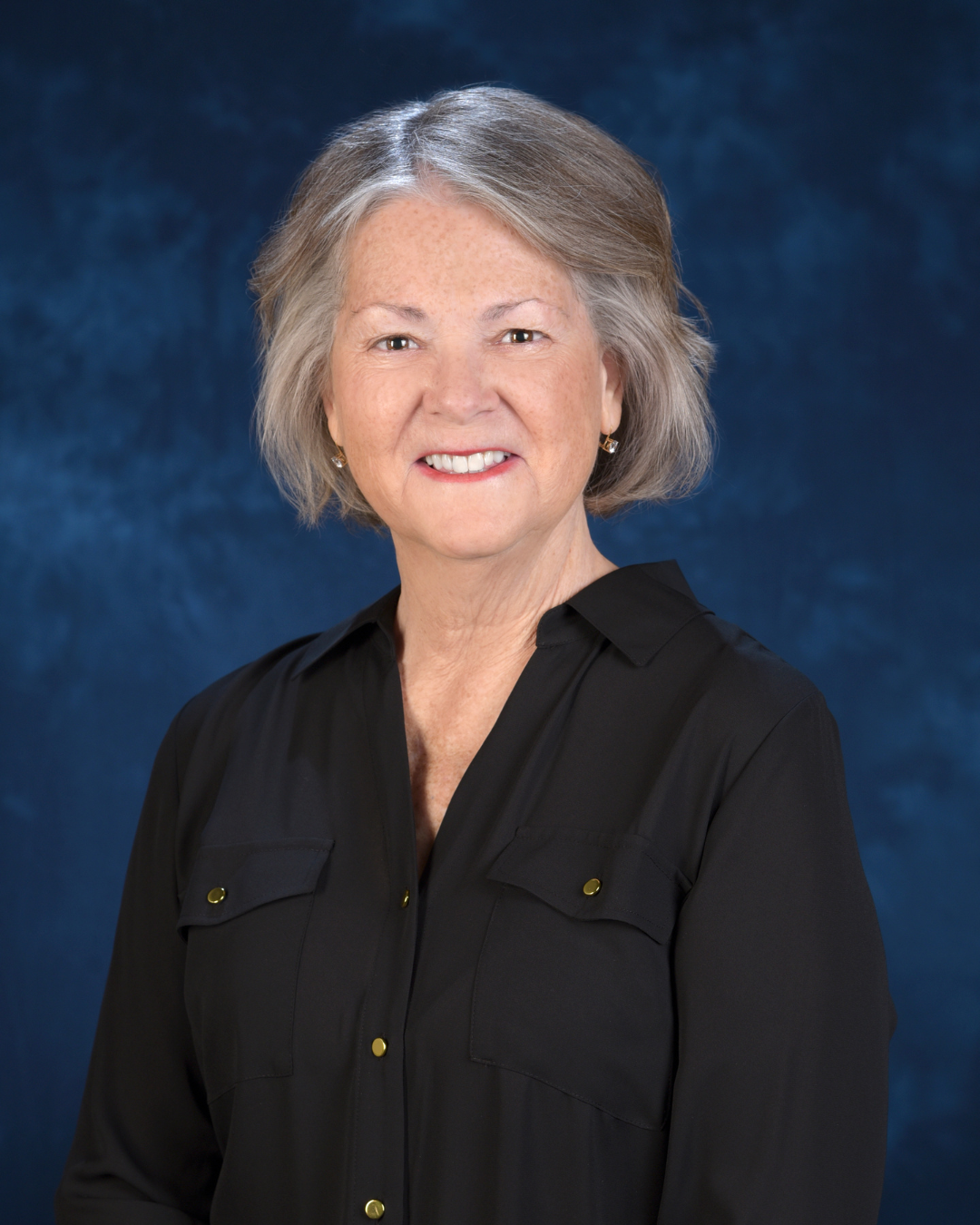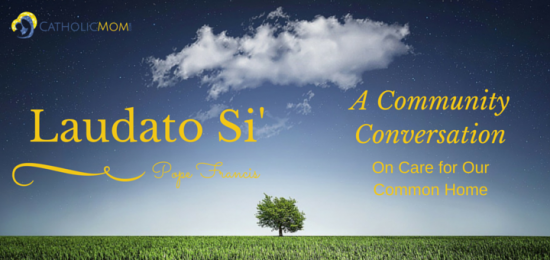Today, we continue our community conversation on Pope Francis’s newly released encyclical On Care for Our Common Home (Laudato Si’). For instructions on how to participate, an overview of the chapters, and information on how to download or purchase the encyclical, visit the Laudato Si’ landing page here at CatholicMom.com. Lisa Hendey
Chapter Four: Integral Ecology
Today Jay Cuasay and Sarah Damm reflect upon Chapter Four.
Sarah Damm:
When my husband Greg and I were first married, we shared a 1998 Honda Civic. There was something romantic about having only one car, as we set up our new home in a quiet Minneapolis neighborhood. Greg took the bus to work, and I drove the car to my job. On weekends, we ran errands together, and much of our socializing was as a couple, so sharing a car seemed natural.
As we settled into married life, we had to rely on effective communication about many things, including the car. We compared schedules, double-checking with one another to make sure the other person didn’t need the car on a particular day. By the time we had two children, coordinating the car took more effort. Often, the girls and I drove Greg to his new job that was no longer on a bus route, so we could go to the grocery store, story time or a friend’s house. Sharing the car was one way we realized that we were not just individuals living under one roof. We were living an integral life, and we were interconnected.
We didn’t invest in a second vehicle until we were expecting our third child. With it came a little more freedom, but what remained ingrained was a good habit of communicating our schedules, appointments and to-do lists. Communication is so vital to being an interconnected family and a healthy habit for recognizing the importance of “active participation of all members” (144). This type of communicating and scheduling has continued to be carried out, as we now have six children to integrate into the ecology of our family.
In Chapter 4 of Laudato Si’, Pope Francis expresses the importance of “an integral ecology, one which clearly respects its human and social dimensions” (137). Because “everything is interconnected” (138). We cannot desire our environment to be cleaner and healthier if we do not also look at the society that lives in that environment. And because society is made up of unique individuals, all relating to each other, it is vital to recognize the dignity of each on its own merit.
This sense of integral ecology can easily be transferred and applied to the family unit. In fact, it needs to be lived out, first and foremost, in the family, which is “the basic cell of society” (157). The environment of our family, our home, can be healthy or unhealthy, and that has everything to do with how the members of that family live, relate and work with each other.
When we recognize our own dignity, as well as the dignity of those we live with; when we practice the notion that a common good (the family as a whole) far surpasses the good of an individual; and when we recognize the sheer gift of our earth, our home, and our family, we can pass these basic tenants of our Catholic social teaching onto our children and then into society at large.
But it all starts with the reality that we are interconnected, and what is more fundamentally integral than the family?
Read Sarah Damm's bio and columns at CatholicMom.com
Jay Cuasay:
The Only Real Atom is the Universe
This encyclical brought back memories of reading Carlos Castaneda in the early 1980s and other “New Age” authors like Teilhard de Chardin or Matthew Fox for Catholics, Alan Watts and D.T. Suzuki for Buddhists. Rather than pulling me deeper into the history, and often Eurocentric philosophical values embedded in western civilization for the Catholic Church, this document espoused values more similar to indigenous peoples like Native American’s “Good Medicine” and “The Spirit-that-moves –through-all things” and the cosmology and metaphysics of Eastern mystics. Thus, it is perhaps understandable why American Catholic reaction to the document was mixed.
Is Eurocentric more traditional, or just more familiar to a certain group of Catholics? When economic policies come into play, is it difficult for readers to hear social and moral insight without the filter of political ideologies? Is this not what we are used to hearing in our science, religion, or politics? Is it just too “New Age” for us? Is it all that new?
“No Man is an Island”
John Donne (1572-1631) wrote this poem a long time ago and it puts forth a notion very similar to Integral Ecology, the main heading and idea for this chapter. Everything is connected: individuals to each other, and everyone to the environment. It’s not a new idea, but it is worth remembering and taking seriously again. Environmental issues are not individual or internal, they are global and interconnected.
In LS #139 Pope Francis makes a more nuanced point: “We are faced not with two separate crises, one environmental and the other social, but rather one complex crisis which is both social and environmental.” It is from here that he grounds the religious and moral approach to people and the environment together. In Section II, he speaks of this social and environmental relationship as Cultural Ecology. Taking up this global view from the perspective of the poor, disadvantaged, and oppressed, we see the cultural environment eroding and at risk and in need of integral assistance.
“At the end of the day, we are still dealing with issues of butter and toilet paper.”
Gabriel, a fellow seminarian was fond of saying this. In the end, what do you do or what does this all mean? For Gabriel, who was on sabbatical, but would return to his missionary church in sub-Saharan Africa, the lives of the poor were his everyday reality. Pope Francis, particularly in Section III: Ecology of Daily Life, the final section of this chapter, lists what is at stake for those most vulnerable to whom we are interconnected in social-ecological matters as diverse as transportation, available housing, agriculture, cultural preservation, relocation and urban development.
Here too Pope Francis makes another nuanced statement: “We can no longer speak of sustainable development apart from intergenerational solidarity...[this] is not optional, but rather a basic question of justice…”(#159) This too is not new, especially to those familiar with Catholic Social Teaching. Here, the principles of solidarity, preferential option for the poor, and the universal destination of goods combine in very relational human terms.
Pope Francis asks us not only to consider the problems and conflicts of today, but also what we are leaving future generations. This also is not new. The Great Law of the Iroquois Confederacy written several centuries before European conquest and the U.S. Constitution speaks of how one must consider the effects of any actions or social policy in light of how it will affect the people down to the Seventh Generation to come.
Back in the 1980s, Seventh Generation was a catalog service for all kinds of new age items for the home. It is more commonly known as a brand name today for home goods. Incidentally, they make toilet paper (but not butter).
Read Jay Cuasay's bio and columns at CatholicMom.com
Reflection Questions:
- In our self-centered culture, how can we share the importance of interconnectedness with our children?
- What are some practical ways we can live out the idea of the common good in our family that stretches us to recognize the common good in society?
- Seriously consider issues of “butter and toilet paper” (our social inputs and outputs). How does this help frame a truly integral ecology for all?
- Considering the “Seventh Generation” motto, what actions are most vital or evidence exists for ensuring that humanity is capable of intergenerational solidarity?
Next week, we will read and reflect upon Chapter Five of Laudato Si’. For more information on this conversation, visit our Laudato Si’ landing page.
Copyright 2015 Sarah Damm and Jay Cuasay
Image credit: Bessi, Pixabay, Public domain
About the Author

Lisa M. Hendey
Lisa M. Hendey is the founder of CatholicMom.com, a bestselling author and an international speaker. A frequent radio and television guest, Hendey travels internationally giving workshops on faith, family, and communications. Visit Lisa at LisaHendey.com, on her Substack at LisaHendey.Substack.com, or on social media @LisaHendey for information on her speaking schedule or to invite her to visit your group, parish, school or organization. Find Lisa’s books on her Amazon author page.



.png?width=1806&height=731&name=CatholicMom_hcfm_logo1_pos_871c_2728c%20(002).png)
Comments